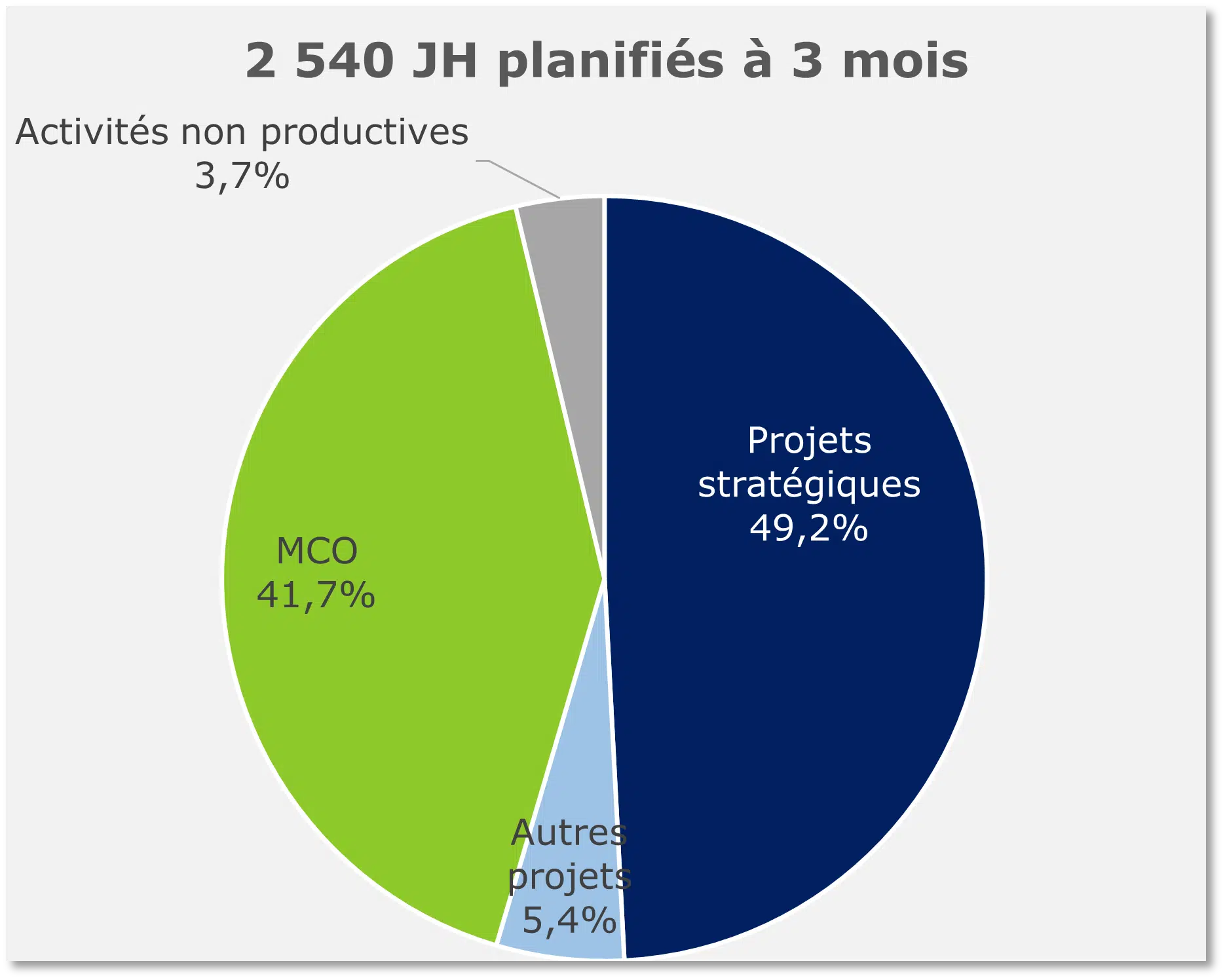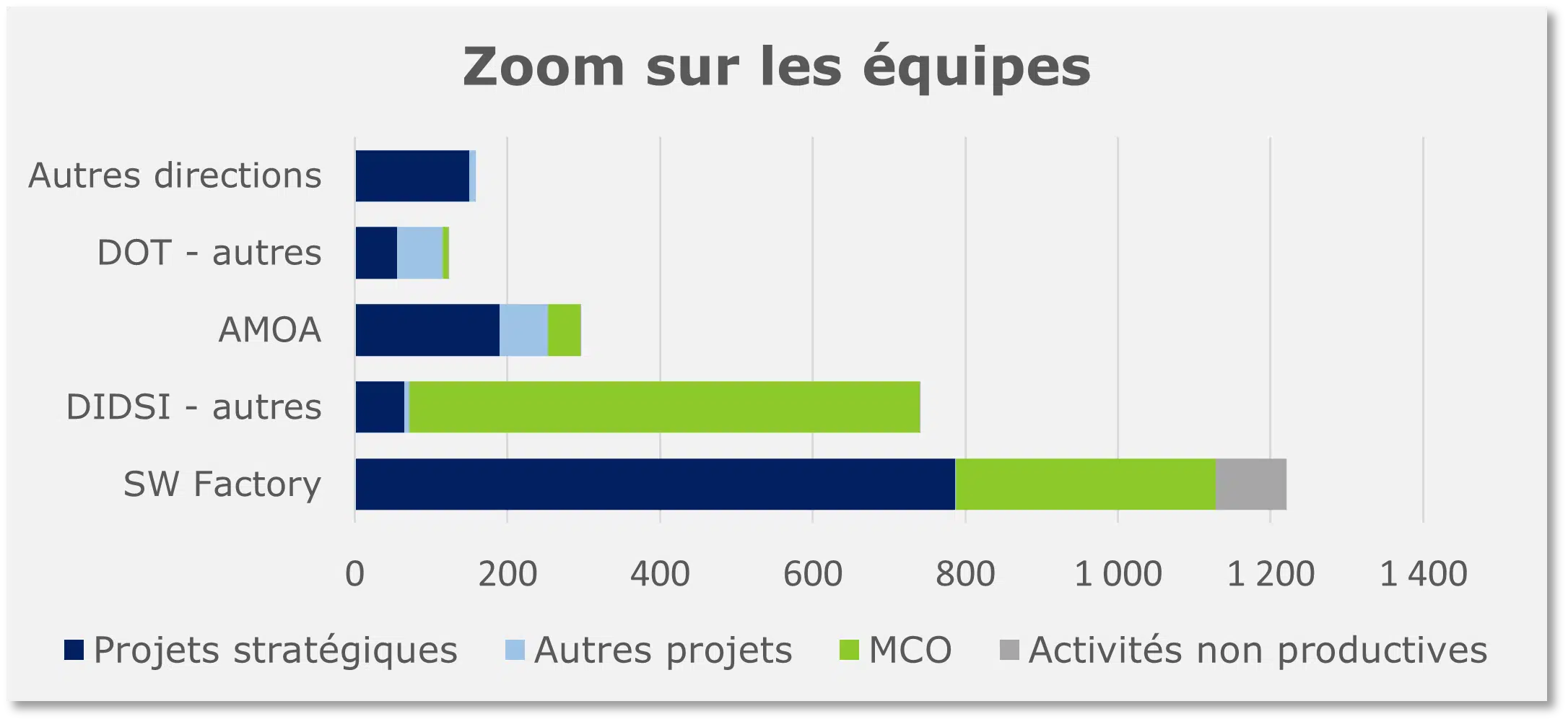Capacity schedule supply chain: testimonial from the Project Manager at Heppner, transport and logistics group
Capacity schedule supply chain refers to the processes and tools needed to ensure that your company and its workforce can meet supply chain demand. Through careful capacity planning, you can identify bottlenecks, streamline operations and minimize the risk of not being able to meet supply chain demand.
Too many projects at the same time with an insufficient success rate?
Tired and frustrated teams?
Dissatisfied management?

Heppner, creator of transport and logistics solutions, is the specialist and independent leader in international trade to and from France. With a strong international presence, Heppner has its own operations in France, Germany, the Netherlands, Spain and Senegal. With 10,000 customers, 3,600 employees, 157 countries served and over 72 million parcels delivered per year, Heppner faces the challenge of staying at the forefront of challenges digital and ecological supply chain issues. With this in mind, strategic projects are mobilizing internal teams (notably the Software Factory at CIO and the AMOA team) on a variety of subjects: upgrading the TMS (Transport Management System), structuring and managing data to improve goods traceability, and projects linked to the environmental transition.
Clément Lalanne, Head of Group Projects, talks about the implementation of IT resource planning at Heppner.
- How do you manage it resources in the supply chain?
- How to structure supply chain project management (processes, tools)?
- How can we coordinate the management of strategic projects and support supply chain management?
Heppner has equipped itself with thePPM tool Project Monitor for time recording, planning and workload management. With the aim of improving workload planning and achieving company objectives around strategic projects
Structuring supply chain project management and project management skills
Heppner is a French ETI founded in 1925. Heppner is an independent specialist and leader in international trade to and from France. Present in all areas of the supply chain, they cover 85 sites worldwide, 157 countries served, 72 million parcels delivered per year.
Supply chain management: 20 strategic projects every year
In the supply chain, digital transformation is a top priority. Data is a crucial element in tracing goods and keeping customers and final recipients informed. Heppner is also proactive in the environmental transition. These challenges around digital and environmental transformation bring with them many structuring strategic projects.
The challenge is to be able to arbitrate the launch of projects according to the capacity of the teams to handle the workload.
The need to professionalize project management thus became paramount:
- A lack of project management methodology
Project management skills within the teams were very heterogeneous. Few project management standards led to silo management and difficult arbitration, since the information provided on project scoping was varied or incomplete.
- The difficulty of managing resources it supply chain
"We had a tool to see past workloads, but we had no vision of the workload to be planned. We couldn't factualize and anticipate the workload in relation to the projects to be carried out. We had a tendency to accept all projects despite warnings from the teams: we're not sure, but it'll pass!"
Objectives of implementing a capacity tool schedule supply chain and project management
The need was therefore to professionalize project management, including the framing and selection process for projects to be validated, portfolio management, community management and tooling.
Define a number of project management standards
- Framing elements
- Model of schedule
- Elements of methodology
Facilitating the work of project managers
- Load planning and consumption monitoring
- Monitoring and adjusting schedules
Factualize workload issues
- Activity input
- Workload plan
- Fact-based arbitration
At Heppner, the schedule capacity from Project Monitor is used by :
89 users
- 3 directors
- 26 project managers
- 56 contributors
- 4 viewers
Breakdown by department :
- 44 users at the CIO
- 11 AMOA users
- 23 users in other internal teams
- 11 external users
57 projects
- 50% Strategic projects
- 45% MCO / Run activities
- 5% other projects
(% of declared time)
How to use capacity schedule in the supply chain?
How do you draw up a workload plan?
The capacity plan enables you to visualize capacity in relation to established workloads. It is possible to focus on resources, projects, and a particular period. The first step is to enter target loads, i.e. to say a priori how much time the resource will spend on this phase of the project. The target load is then spread over the duration of the phase or project. A color code helps you easily see if the resource is overloaded (red), over the coming month, week or even day.
How can I find out how much time I spend on each project?
To find out how much time has been spent on each project, simply view the actual workload. You can view this data by resource, project, phase or project portfolio.
How do I enter the time spent on each project?
Each user of the application can enter his or her time spent on projects or activities, by hour or day.
- Project manager defines target and assigns workload to contributors
- Contributors adjust their remaining work
- Contributors capture time spent
- The project manager manages the use of the project load
"Remember to send a reminder at the beginning of the month to those who haven't done their time entry."
Each resource has its own personal time sheet for allocating time spent on projects. To simplify time entry, Project Monitor allows you to create pre-filled timesheets with planned activities.

How do you manage the it resources of supply chain projects?
- The manager monitors the planned workload of his teams and alerts them to any problems.
- The manager reminds his teams to enter their times
- Managers can analyze monthly workloads (actual vs. planned)
"My advice is not to go into too much detail when planning. Entering time on sub-subtasks is not necessarily useful for load management. Micro-details are ultimately more complicated to adjust the target and reporting."
Project Monitor allows you to articulate your workload plan in relation to the capacity of your resources, so you can better allocate recurring activities. Capacity schedule gives you an ergonomic view of overloads and available resources.

How can we coordinate the management of strategic projects and support supply chain management?
- Loads consumed and planned are regularly shared at Project Portfolio Reviews
- A quarterly medium-term workload planning exercise ensures that everything is under control, and enables arbitration if necessary.
"The project portfolio review brings together the Managing Director, the Information Systems Director and the Operations Director every 6 weeks, to review strategic projects. We review the progress of projects, new projects to be validated, and the volume of workloads per project. This also enables us to highlight the ratio between % strategic projects and % MCO, so that we can plan the actions needed to balance them out.
The time spent on the project will enable us to draw positive and negative lessons from projects in progress or to be completed. Information can be viewed in dashboards

Downloadable guide
Supply Chain - How to optimize IT resource planning?
The Group Project Manager, Logistics Project Development Manager and Project Innovation Director at Heppner, Chronopost, DPD-GeoPost and Intermarché contributed to this guide.
Your challenge is to be able to assess your teams' ability to handle the workload? And make it easier to decide whether to launch projects?
Find out how to optimize your resource planning in this guide:
✔️Affecterand plan resources according to their availability in real time with capacity schedule supply chain
✔️Mettreset up governance rules for project templates and support supply chain management
✔️Rationaliserproject methodology within departments
✔️Descase studies & feedback from logistics project managers
Example of resource planning by type
"Be careful with the ratio between MCO and Strategic Projects. You need to maintain bandwidth to ensure the maintenance of the IT assets, and therefore perhaps be more selective about projects. By analyzing workloads, we can estimate overloads. And thus review the projects that were planned: Should a project be postponed? Do we need to plan external interventions? Do we need to recruit? Project Monitor is a software solution that helps us to have a vision of resource planning, but also more broadly to analyze ROI on time spent and better structure our strategic projects".


Questions & Answers
How do you convince employees to sign up to time tracking?
The tool can be used to show actual workloads and avoid overloads. Time recording and planning should not be seen as a means of "policing", as the aim is to show the volume of work per project, so as to better arbitrate. This approach has been well received.
How are strategic projects differentiated from other projects?
We defined a project typology with tags. We have defined 3 types of project: strategic projects, other projects and MCO. We also have forms for scoping notes and project tracking dedicated to strategic projects.
How did you support your teams in validating the project's target load?
Above all, we provide guidance on project scoping, the elements to be taken into account when creating a project. We've worked on a project scoping model, with a form. In particular, we need to know what type of profile is required for the project (generic profile).
Project Monitorresource & project portfolio management software
Virage Group is the publisher and integrator of the project portfolio management software Project Monitor.
Align planning with resource capacity and availability!
- Time tracking
- Workload plan
- Planned versus actual
- Reports and dashboards
- Project portfolio review
